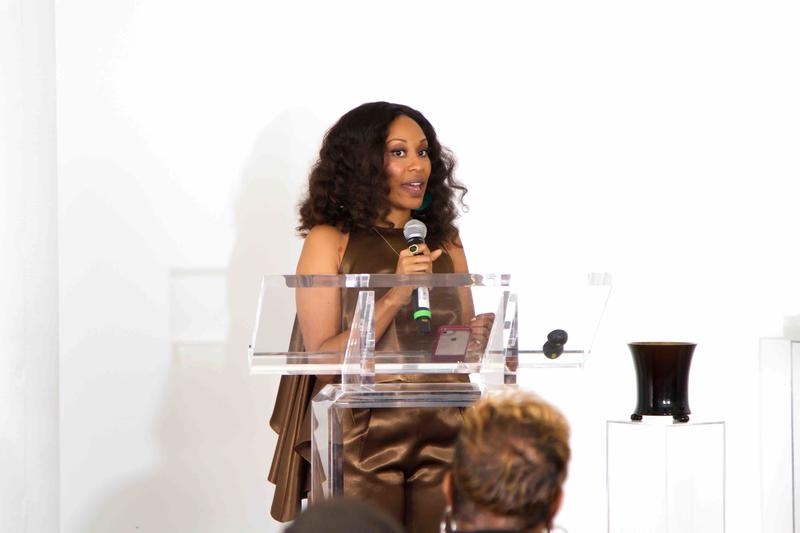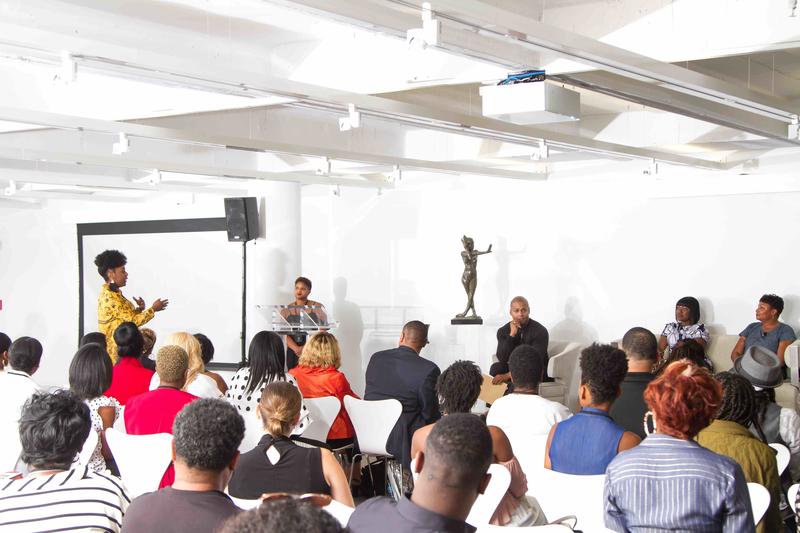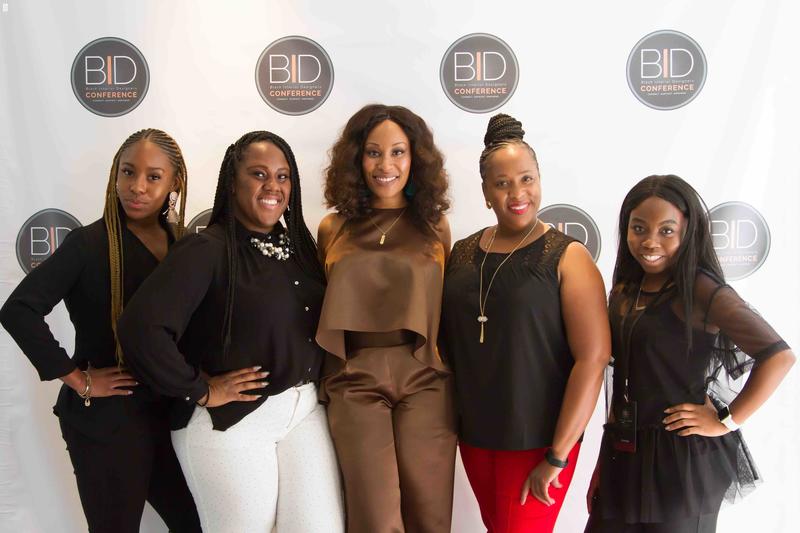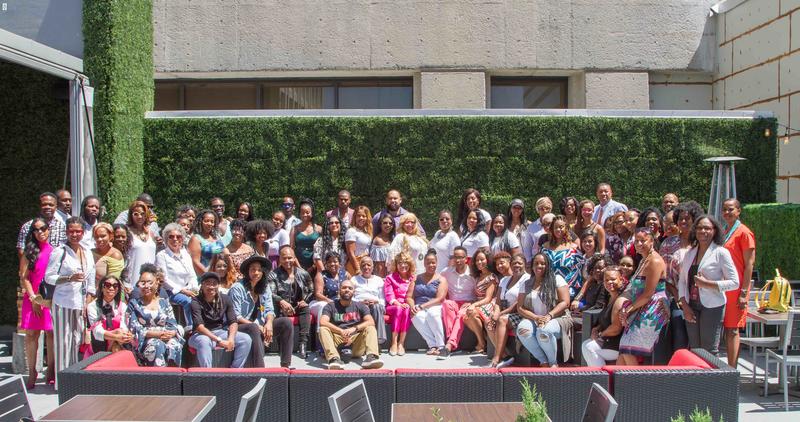Black Interior Designers Network (BIDN) president Keia McSwain opened the organization’s seventh-annual conference at ADAC last month with a moving tribute to her mentor, the late Kimberly Ward, who founded the group in 2011. “One of the most important things Kim taught me was that if you have a gift inside of you, it has to come out,” McSwain told the group. “It’s OK to shine, and to stand out from the ordinary. I’m here to remind you that you are great—that the dreams and struggles we deal with every day are what help us grow.”

BIDN aims to celebrate diversity within the design industry by shining a spotlight on designers of color and providing resources to help black designers to grow their businesses. Tony Ward, who became CEO of the organization after her sister’s passing, championed the organization’s mission and encouraged the designers in attendance to continue to build their businesses. “The vision Kim had for the Black Interior Designers Network was to shine a light on all of the good work you are doing,” she said. “She wanted us to keep moving forward, and that’s what we’re going to do.”
The conference drew attendees from all over the country, as well as at all stages of their careers. Some of the designers who attended balance a full-time corporate job with design work on the side; they came not only to get inspired, but to learn how to turn their passion for design into their primary career. Also in attendance were more than a dozen students, who were applauded heartily and encouraged to seek out mentors in the crowd.
Many designers pointed out that they were the only (or one of the only) designers of color they knew working in their region. “Working in a small interior design business as an African American is often isolating,” said conference attendee Keela Richard, the owner of Kay’s Decor & Interiors in Marietta, Georgia. “Without exposure to expert viewpoints, we can sometimes miss out on new ideas, information and trends that can yield business growth. This conference offers great educational information to enhance businesses at all levels.”
“The annual conference always provides stellar educational and networking opportunities,” says ADAC general manager Katie Miner. “ADAC exists not only to provide a venue for the sale of luxury furnishings, but also to educate, inspire, and connect every facet of the design industry, and our relationship with the Black Interior Design Network is extremely important to helping us fulfill that mission.”

The three-day event focused on business-building and best practices, in addition to showroom tours and a shopping day in Atlanta. The programming featured a number of industry players speaking to their strengths:
Chicago-based designer and HGTV host Tiffany Brooks walked attendees through her project management processes, from initial contacts with potential clients through install day, and answered tough questions about running a design business with sage advice. What are red flags to look out for in an initial consultation? “A client who has worked with a different designer in the past. You will never make her happy.” When in the process do you get paid? “Never waive your consultation fee. It’s a hard rock to get out from under when you use the word free.” How do you close the deal? “I have a higher closing rate when I come over with cookies and present my 11-page contract by hand.” When should you fire a client? “The clients that keep you up at night are not worth your time. I give them their client binder so that they can execute the rest of the project and it is as convenient for them as possible—but I also bill ahead so that I can be in control of that refund.”
Designer Michel Smith Boyd moderated a panel about how to get the most out of a visit to High Point Market, with designer Cheryl Luckett of Dwell by Cheryl; Shane Jones, a North Carolina–based designer account executive at Sherwin-Williams; and product designer Lynai Jones of Mitchell Black. “It’s like going to Disney World: You need a plan,” advised Luckett. Designer Darcy Harris also shared her sourcing strategy for clients, from the trade shows and art fairs she attends to the antique stores she shops. “Don’t wait for a big project to start shopping,” she said. “You have to be everywhere, getting yourself ready for the next big project.”
Magazine editor–turned-author Amy Flurry presented an overview of how to be your own publicist. The first step to getting good press? “Think like an editor,” she told the group. “There is so much opportunity, you just have to find your fit.” Designer Dominique Calhoun was on hand to explain how she used social media to build her fledgling design firm, Remix. Today, 80 percent of her business comes from Instagram; the other 20 percent from referrals.
Nikki Chu and Monica Wilcox presented their new venture, an online education portal called Diversity in Design, and talked about how they built their businesses. “In the beginning, I told myself that I had a lot of clients because I was really good—but, really, I was cheap,” recalls Wilcox. She told the story of a client who thought Wilcox’s rate was $15,000 instead of $1,500—and happily wrote the much bigger check. “I realized, I am worth it. The service you are offering is a want. Make them want it—you can charge them for that.”

BIDN also debuted its own big step forward: a new membership structure and a revamped website that aims to transform the organization into a robust discovery tool, lead generator, support system and resource that helps member designers build their businesses. “It’s an ongoing treasure trove for us to share,” explained Brooks as she detailed the library of more than 250 documents, including sample emails, contracts, and questionnaires that are available to paying members. The same membership also includes access to a buying group powered by Design Trade Service for trade discounts; a growing resource list of black contractors, lawyers, accountants, photographers, artists and artisans; and a matchmaking service for homeowners looking for a black designer.
“The people who know how important it is to put money back into the community are Googling ‘black interior designer,’” she said. “They are out there looking for us, and this site is a comprehensive place for them to find us.” The BIDN site was already the top search result for people looking for designers of color, she noted. “We just needed to put some ketchup on that hot dog.”

The emotional undercurrent of the event was one of support and sharing. “That’s how we win, is to come together and share resources,” said Brooks. Instead of viewing other designers as competition, the conference’s energy focused on succeeding together. “There’s enough room for everybody,” said Austin-based designer and BIDN treasurer Stephanie Sullivan Whalon. “In an industry where we are just 1 percent, it’s easy to be discouraged. This network asks, ‘What can I do to pull you up?’ It’s a complete collaboration of mind and heart.”




























